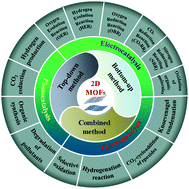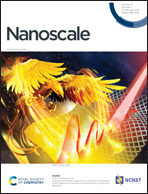2D metal–organic framework-based materials for electrocatalytic, photocatalytic and thermocatalytic applications
Abstract
Ultrathin two-dimensional metal–organic frameworks (2D MOFs) have recently attracted extensive interest in various catalytic fields (e.g., electrocatalysis, photocatalysis, thermocatalysis) due to their ultrathin thickness, large surface area, abundant accessible unsaturated active sites and tunable surface properties. Besides tuning the intrinsic properties of pristine 2D MOFs by changing the metal nodes and organic ligands, one of the hot research trends is to develop 2D MOF hybrids and 2D MOF-derived materials with higher stability and conductivity in order to further increase their activity and durability. Here, the synthesis of 2D MOF nanosheets is briefly summarized and discussed. More attention is focused on summaries and discussions about the applications of these 2D MOFs, their hybrids and their derived materials as electrocatalysts, photocatalysts and thermocatalysts. The superior properties and catalytic performance of these 2D MOF-based catalysts compared to their 3D MOF counterparts in electrocatalysis, photocatalysis and thermocatalysis are highlighted. The enhanced activities of 2D MOFs, their hybrids and derivatives come from abundant accessible active sites, a high density of unsaturated metal nodes, ultrathin thickness, and tunable microenvironments around the MOFs. Views regarding current and future challenges in the field, and new advances in science and technology to meet these challenges, are also presented. Finally, conclusions and outlooks in this field are provided.

- This article is part of the themed collections: Nanoscale Horizons, Nanoscale, and ChemComm: Nanocatalysis, Editor’s Choice: Functional MOFs and COFs, Nanoscale 2022 Lunar New Year Collection, Nanoscale Most Popular 2021 Articles and Recent Review Articles


 Please wait while we load your content...
Please wait while we load your content...